During the season of over-indulgence that begins with Thanksgiving and lasts right up through New Year’s Day, I like to serve up the occasional collation that features something at least marginally nutritious. When kale hit the “eat more often” list in a big way, everyone I knew was whipping up batches of kale chips for guilt-free snacking. Flavor aside, I find them a source of worry, as regards the potential for a leafy green smile. There is a better way to add greens to the cocktail party scene.
My friend Susan is the hostess we all aspire to be. When people gather at her home, there’s a good chance that spinach balls will be part of the excellent hot/cold hors d’oeuvre array that is her trademark. Her recipe is as old as the hills, perhaps dating back to the 1970s when StoveTop® Stuffing, an integral ingredient, first appeared on the market. Like many recipes from that era, the emphasis was on “convenient and easy”, and of course, delicious.
Susan and I discussed how this recipe could be tweaked to make it less reliant on a processed product, but decided in the end, “If it ain’t broke, don’t fix it.” A quick shuffle through Google indicated that many people have had the same idea. I played around with a couple of approaches, and arrived at a tasty variation to share with you that includes the flavor elements of spanakopita, just for a little change of pace.
Spanakopita Snacks
Most recipes for spinach balls start with two 10-ounce or 300-gram packages of frozen chopped spinach, the standard unit since I was a child. When you thaw one of those packages and squeeze out all the excess moisture, you end up with about 3/4 of a cup of spinach. Frozen spinach now comes in bags of pellets, which are mighty convenient if you like to toss a little spinach into anything that’s going, from soup to mac and cheese, but not so helpful with the original spinach ball recipe. On the day I shopped for testing, there wasn’t a single bit of frozen spinach in the whole store, so I started with fresh, which I weighed, and wilted, and weighed, and squeezed to remove the water, and weighed, and measured — the only thing I didn’t do was freeze it.
At the end of the day, I concluded that close is good. You can use as much spinach as you want, or as much spinach as you have, within reason – the end product is still going to be tasty.




This recipe makes a lot. You can cut it in half, but if you’re prepping anyway, make the whole batch and tuck the surplus in the freezer. Great snacking, and easy entertaining.
Ingredients:
- 2 cups of any kind of seasoned stuffing mix ( one 120-gram box), OR 1 ¾ cups of seasoned fine breadcrumbs (they’re denser – use less), OR 2 cups of Panko (Japanese crumbs) well seasoned with onion/garlic/herb blend. If you need a gluten-free option, there are gluten-free crumbs in grocery stores now, or you could toast up some gluten-free bread and blitz it into crumbs, or crush gluten-free crackers and season them up with onion/garlic/herb blend. Use 1 ¾ cups fine crumbs.
- ½ cup butter, melted and cooled
- 2 eggs
- ½ cup crumbled feta cheese
- ¼ cup finely grated parmesan cheese
- 2 cloves of garlic, roughly chopped, or ½ tsp garlic powder
- ½ tsp black pepper
- 1 bunch green onions (about 6), roughly chopped (or ½ cup finely chopped regular onion)
- 1 – 2 Tbsp fresh dill sprigs, or 1 tsp dried dill (weed, not seed)
- Finely grated zest and juice of one lemon (about 1 Tablespoon, and 3 Tablespoons, respectively)
- Spinach: two 300gm boxes, thawed, or weigh out 500 – 600gms of frozen pellets and thaw them, or wilt about a pound (500gm) fresh spinach. Squeeze out all the excess moisture, and measure out about 1 ½ cups. It’s really important to squeeze the dickens out of the spinach, so it has as little residual moisture as possible. I use my ricer, which has nice long levers — just pop in a big handful of thawed spinach and squeeze. You can wrap the spinach in a clean kitchen towel and squeeze the moisture out by twisting. You can simply squeeze it in your hands, or press it against the side of a sieve with a spoon or a rubber scraper. If you leave out the squeezing part, your spinach ball mixture will be soup, and you’ll have to go to the store for more stuffing mix.


Method:
If you don’t have a food processor, crush the stuffing mix with a rolling pin, and chop everything else finely before vigorously stirring everything together to form a nice paste.
If you DO have a food processor, do this: Put the stuffing mix into the food processor bowl with the standard blade, and pulse it a few times to break down the bigger pieces.


Next, put everything else into the food processor bowl. Pulse about 10 to 15 times, scrape down the sides, then pulse or process until everything is well mixed.
If your mixture seems somewhat sloppy and wet, let it sit for about 10 minutes so the breadcrumbs can absorb some of the moisture. If it remains too loose to form, add more seasoned breadcrumbs, about half a cup to start with and more if needed. Did you read the part about squeezing the moisture out of the spinach? Read it again.


Portion as you choose. I used my two-tablespoon scoop.
Roll little balls. The dough can be quite soft and sticky – you might want to lightly coat your hands with non-stick spray or use a little vegetable oil.


Although they’re very tasty “naked”, if you want extra-crunchy exteriors, take the time to lightly coat them with more breadcrumbs (I used Panko). The easiest way is to sprinkle a cup or so of the crumbs over the formed balls on a baking sheet, and then gently shake it back and forth so they coat themselves. Any kind of finely crushed bread crumbs or cracker crumbs will work well (like Ritz, for example) and you could even use finely grated parmesan cheese. I didn’t toast my Panko, and I really wished I had — the crumbs don’t brown up very well in the toaster oven.

Bake in a pre-heated 350°F oven for 20 to 30 minutes. Cooking time will depend on how big you made the balls – tiny ones bake quickly; bigger ones take more time. They should be toasty on the outside; the inside will be set but still slightly soft.


If you made a big batch, freeze them uncooked. Place them on plastic-lined tray(s) and freeze them solid, about an hour and a half. Transfer the frozen balls to a freezer bag, drawing out as much air as possible. They don’t need to be thawed, but they do take a bit longer to bake, more like 45 to 50 minutes in a preheated 350°F oven.


I like to serve Spanakopita Snacks with a simple dip made of drained or Greek yogurt, flavored to taste with lemon juice, dill, onion/garlic/herb blend, salt, pepper, and Frank’s hot sauce. They’re great with asiago and artichoke dip, or tzatziki.

Basic spinach balls are a good matrix for creative flights of fancy. Many of the source recipes I cruised called for the inclusion of finely chopped fresh mushrooms, which I think risks a very wet finished product. If you want to add mushrooms, sauté them until they’re dry before adding them in. If you want to use a meltier cheese, like mozzarella or Monterey Jack, I think that would be ok if you don’t use too much — the virtue of the Feta and Parm is that they don’t melt, so the snacks don’t either.
Next time I make a batch, I’m adding some well-drained crab meat – I expect them to be delish, with a little tartar sauce! Or maybe I’ll add some roughly chopped pinenuts and a bit of fresh mint. Or bacon – crumbled crisp bacon – because everything’s better with bacon. Get creative, and use this recipe as an opportunity to add a little more dark-green-leafy goodness to your appetizer menu.
And yes, you kale-crazy people — it should work pretty well with kale too.



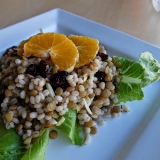
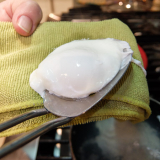
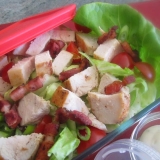

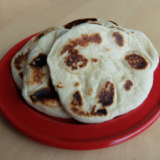
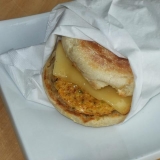
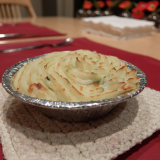
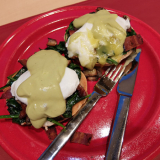
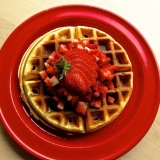

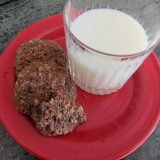
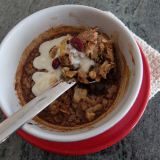

Leave A Comment